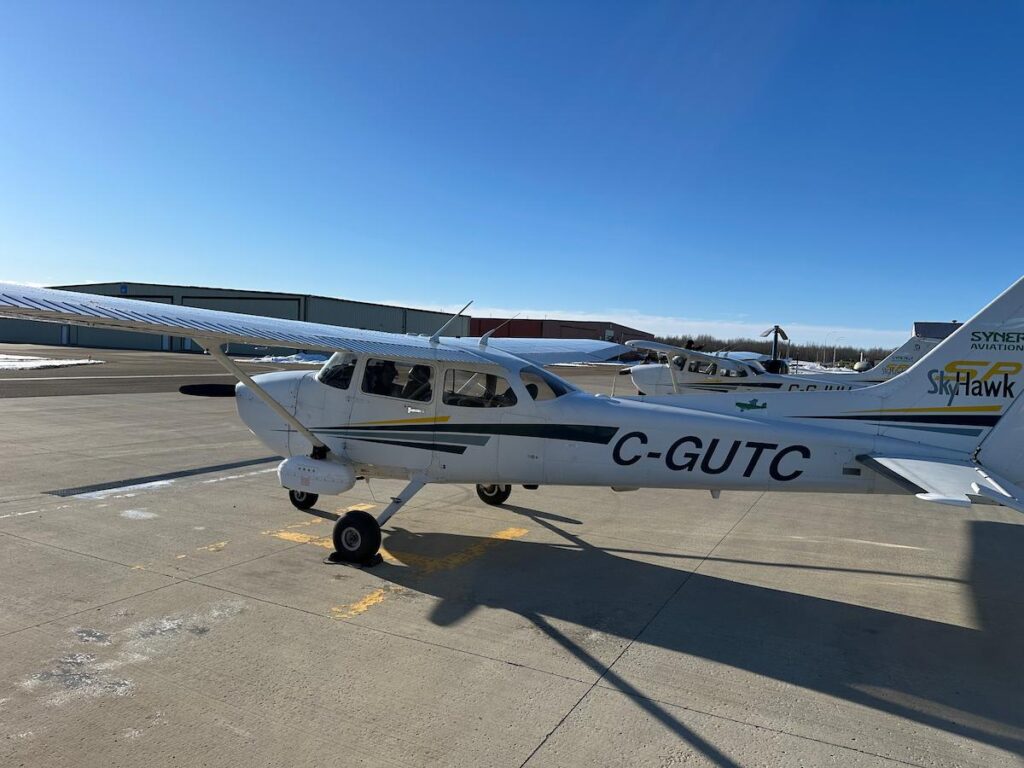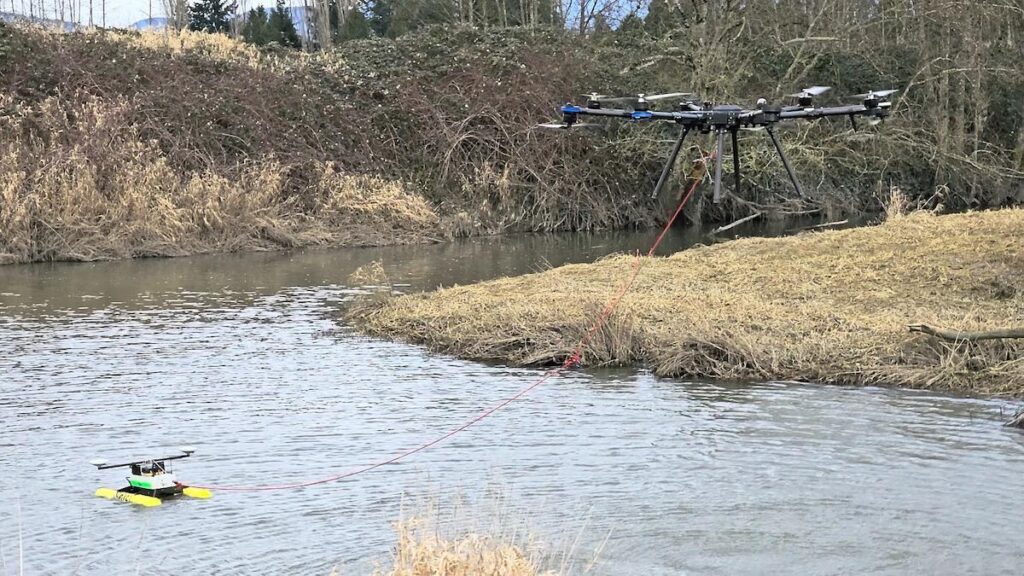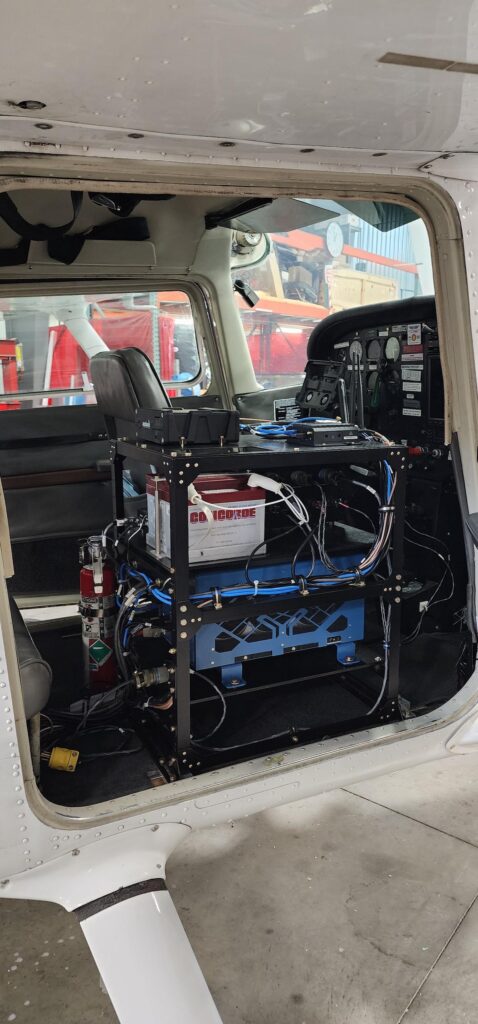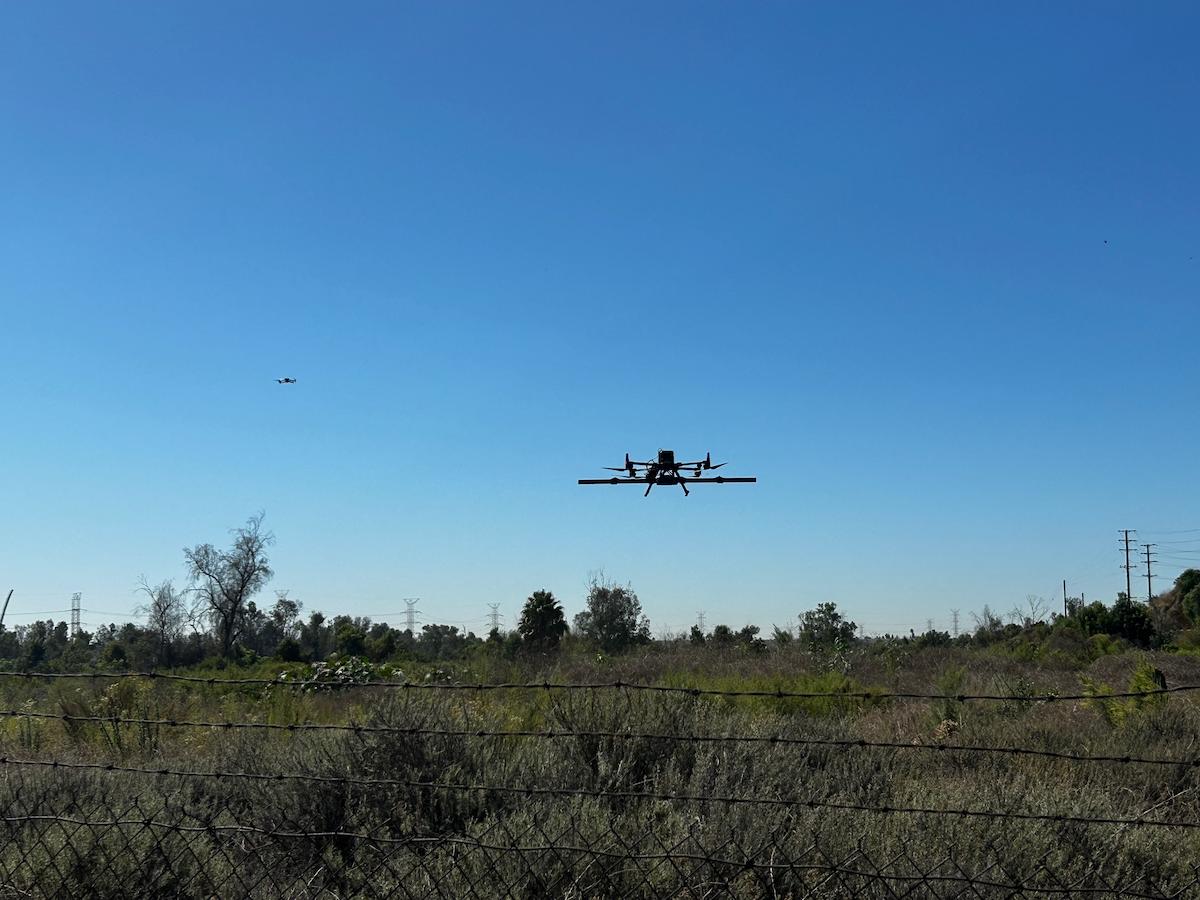Ensuring the safety, reliability, and regulatory compliance of North America’s vast energy pipeline networks is a high-stakes challenge—one that Synergy Aviation (a Volatus Aerospace company) has mastered by blending traditional aviation, advanced drones and cutting-edge sensor technology. The company has become an industry leader in aerial surveillance and pipeline integrity monitoring, supporting asset owners with a comprehensive suite of services that safeguard critical infrastructure across Canada and the United States. This article, based on the recent Dawn of Autonomy podcast with Craig Husselby, Synergy’s Vice President of Business Development, explores how the company’s multi-platform approach has arguably set a new standard for pipeline integrity operations.
Meet One of the Strategic Leaders Propelling Synergy: Craig Husselby
Craig Husselby has helped to spearhead Synergy Aviation’s continued ascent in the aerial pipeline surveillance and integrity monitoring sector. Before joining Synergy, he enjoyed a stellar career that spanned 15 years in oil and gas. With pivotal roles at Suncor, Shell, CNRL and Pembina Pipeline, Husselby developed a reputation for analytical rigor and commitment to operational excellence.
Husselby eventually transitioned into aviation program management. As such, he developed and oversaw fixed wing, rotary and remotely piloted aircraft systems (RPAS) policies for major energy firms to ensure both regulatory compliance and innovation in asset protection.
Husselby’s current approach is deeply rooted in the belief that Synergy, while fundamentally an aviation company, is equally a data company. “At our heart, we’re an aviation company, it’s in our name, but realistically…we’re a data company supporting those oil and gas assets…The main thing there is…providing asset integrity on the back end.”
Synergy Aviation: Doing What They Know & Doing It Well

Synergy Aviation’s story began in Alberta in 2014 with just two aircraft and a straightforward mission: deliver safer, more effective pipeline surveillance. The company’s founders, Todd Tkach and Marc Hanatschek, identified a market need for a provider that could combine professional aviation with advanced technology and client-centric communication. Their philosophy was simple—do what you know and do it well.
Over the past decade, Synergy has transformed from a small operator into an industry leader. With a fleet of 28 aircraft, including fixed-wing planes, helicopters and a rapidly expanding suite of drones – the company’s growth has far outpaced the founders’ early expectations.
In 2022, Synergy Aviation became part of Volatus Aerospace, one of North America’s premier aerial intelligence providers. According to Husselby, this strategic move has allowed Synergy to leverage Volatus’ resources, technological advancements and regulatory advocacy to further enhance its ability to deliver comprehensive aerial solutions across Canada and the United States.
The “Why” of Pipeline Inspections: Safety, Compliance & Stewardship
Pipeline integrity monitoring is not just a regulatory checkbox. It’s a critical safeguard for public safety, environmental protection and operational continuity.
Most pipelines are buried, which makes visual inspection difficult. Synergy’s aerial surveillance identifies threats ranging from dead vegetation (a sign of leaks) to unauthorized third-party activity, erosion and signage compliance.
Regulations in both Canada and the U.S. require regular inspections for methane leaks and other hazards. For example, the Pipeline and Hazardous Materials Safety Administration (PHMSA), an agency within the U.S. Department of Transportation, has published rules that mandate investigation of any reported methane emissions. Canada has similar regulations. Synergy’s services ensure asset owners meet these requirements efficiently while minimizing risk and liability. “The primary goal is to meet that regulatory requirement for the energy company—that their pipeline is operated in a safe way,” Husselby noted.
A Multi-Platform Approach: Aircraft, Drones & Advanced Sensors

To perform these operations, Synergy has curated a unique blend of crewed and uncrewed aircraft, each equipped with specialized sensors tailored to the demands of pipeline integrity monitoring.
The company’s traditional surveillance operations rely on Cessna 172s and Robinson R44 helicopters. These serve as the backbone for long-distance patrols and access to remote areas. Two-person crews (a pilot and an observer) staff these missions to provide real-time anomaly detection and regulatory compliance.
Over the past several years, drones have increasingly become indispensable for inspections in hazardous or hard-to-reach environments, such as tight corridors or low-altitude surveys. They offer rapid deployment, repeatability and reduced risk to personnel.
For remote sites requiring frequent checks, Synergy employs autonomous drone stations. This further reduces the need for risky, time-consuming ground travel.
In addition, the team uses heavy-lift drones equipped with sonar for underwater pipeline crossings, mapping riverbeds and detecting potential pipe exposure-tasks previously reserved for divers or boats (more on this below).
The company maintains a sensor suite as equally diverse as its aircraft.
- HD Visual Inspections: High-resolution cameras capture detailed imagery. This enables detection of leaks, exposed pipes, erosion and third-party activity. Images are geo-referenced for precise reporting.
- Thermal Infrared Imaging: Thermal cameras spot temperature anomalies to reveal leaks or insulation failures invisible to the naked eye.
- Laser-Based Gas Leak Detection: Boreal and Vanguard Falcon XL systems provide real-time methane detection, with sensitivity down to parts per million in support of methane compliance and environmental stewardship
- 360-Degree Cameras: These systems leave a “breadcrumb trail” of panoramic images, enhancing documentation and situational awareness.
- LiDAR and 3D Imaging: LiDAR-equipped drones create detailed topographic and volumetric maps to support slope stability assessments and change detection over time
Diving Deep: Multi-Beam Echo Sounder – Sonar for Underwater Pipelines
One of Synergy Aviation’s most compelling recent advances includes its testing of the Norbit Multi-Beam Echo Sounder sophisticated sonar system for underwater pipeline inspections.
Husselby explained what his team looks for during these underwater operations, especially after a weather or other impactful event. “One of the problems that a lot of the pipeline companies have is…they’re operating underneath waterways… the bottoms of the rivers themselves aren’t static. There’s a lot of movement within the beds… so what the worry is, during those events, that the water’s going to be moving quickly and they’re going to get some scour at the bottom of the river. When that happens, there’s a potential for a pipeline to be exposed.”
Traditionally, inspecting underwater pipelines required deploying divers or boats, both costly and risky, especially in fast-moving or environmentally sensitive waters. A large drone can transport and deploy the multi-beam echo sounder directly over the waterway. Once in position, the drone lowers the sonar device into the water to scan the riverbed, mapping its contours and identifying any exposed sections of pipeline or areas where erosion has reduced the protective cover.
Husselby explained the many ways that this method delivers several critical benefits. It removes the need for divers in hazardous conditions and eliminates the risks associated with boat operations in restricted or remote areas. The multi-beam system provides high-resolution, three-dimensional mapping of the riverbed. This provides precise visualization of pipeline exposure and potential threats. Deployments can be completed rapidly, often in locations where traditional access is impossible or heavily restricted. Finally, this approach minimizes disturbance to sensitive aquatic habitats by avoiding the need for large vessels or intrusive ground activities.

Comprehensive Asset Integrity Solutions
In addition to the underwater pipeline use case, Synergy offers a full spectrum of aerial and data-driven services.
The company’s “bread and butter,” according to Husselby, is pipeline patrols. These involve regular flyovers for visual and sensor-based inspections. The team performs gas leak detection using laser and thermal systems for methane and other gases. Thermal imaging detects leaks, insulation failures,and temperature anomalies, while LiDAR and change detection are used for slope susceptibility and geohazard monitoring. GIS consulting supports custom mapping, data integration and analytics. The company also creates digital twins-3D modeling of pipeline environments for risk assessment and planning.
With over two million miles of pipeline monitored annually, Synergy manages a vast library of images and sensor data. This data-centric approach, supported by AI analytics and digital twin modeling, enables asset owners to move from reactive maintenance to proactive risk management.
The company trains its observers to the highest standards. These professionals must undergo a rigorous six-month training program so that every report is backed by expert analysis and industry best practices. They feed their insights and the collected data into Synergy’s proprietary AIRS3 portal. This provides clients with secure, efficient access to the data, which it also translates into user-friendly reports containing actionable intelligence.
Partnerships Powering the Future: FlyScan and Skipper NDT
Synergy’s collaboration with FlyScan brings hyperspectral imaging and AI-powered analytics to pipeline surveillance. The “Flying Pig” system, mounted in crewed aircraft, automates the detection of oil leaks, third-party activity and other anomalies to reduce reliance on human observers and improve consistency.
“We’ve been working with FlyScan for two years now…using hyperspectral cameras and AI-enhanced software to do visual inspections,” Husselby shared. While currently limited to manned aircraft due to size and power requirements, the goal is to miniaturize these systems for drone deployment as regulations and technology advance.
Synergy’s partnership with Skipper NDT is equally groundbreaking. Skipper’s Argos payload uses fluxgate magnetometers and GNSS to perform non-contact, drone-based mapping of buried pipelines. These detect both geolocation and bending strain without excavation or service interruption.
This technology enables rapid, safe assessment of pipeline movement and potential geohazard impacts, especially valuable between traditional inline inspections. Husselby emphasized, “Taking that step where we’re measuring erosion to provide our customers with help from Skipper with bend strain analysis on the pipe itself…that’s pure risk management.”
What’s Next for Synergy Aviation?
Looking ahead, Synergy remains focused on greater drone integration as regulations evolve to allow larger and more capable drones to take on a bigger share of inspection work—especially for long-distance and hazardous environments.
“We’re trying to reduce risk in this world, and that’s one of the ways we can do it—by moving forward with more unmanned services and advanced data integration,” Husselby noted.
For this reason, sensor miniaturization also remains a key priority for the company. It has efforts underway to adapt advanced sensors for drone deployment to expand both the reach and efficiency of aerial inspections. By combining multi-sensor data streams, Synergy aims to deliver even more comprehensive digital twins and predictive analytics for asset owners.
Taking Pipeline Integrity Ops Even Higher
Synergy Aviation stands at the nexus of aviation, data science and energy infrastructure. By combining traditional aircraft, advanced drones and a growing suite of cutting-edge sensors, the company delivers unparalleled visibility and actionable intelligence for pipeline owners across North America. Its partnerships with FlyScan and Skipper NDT, supported by the resources of Volatus Aerospace, position this group at the forefront of safe, efficient and compliant energy operations. As regulatory frameworks catch up and technology continues to advance, keep watch as Synergy’s multi-platform, data-driven approach will undoubtedly continue to set the standard for pipeline integrity into the future.

